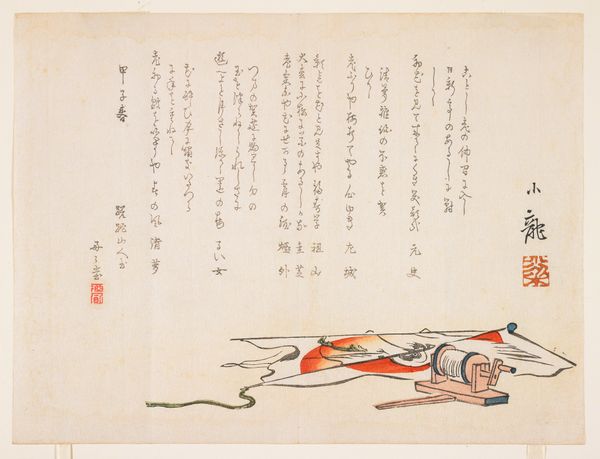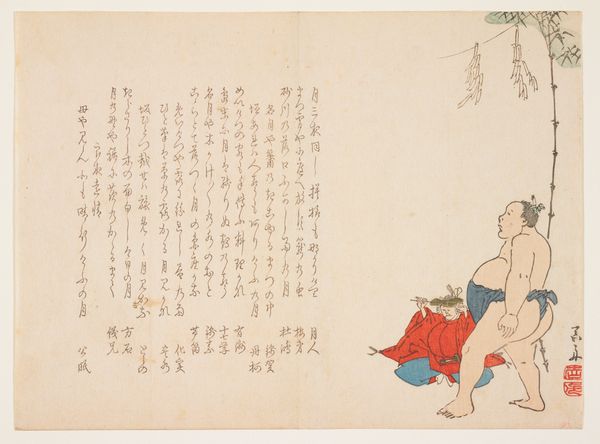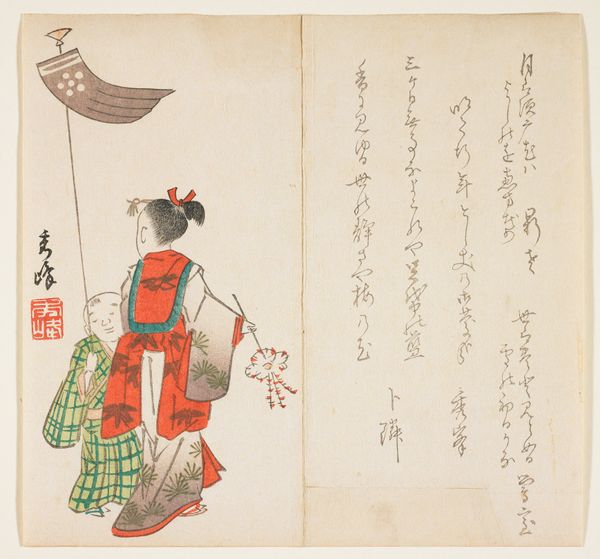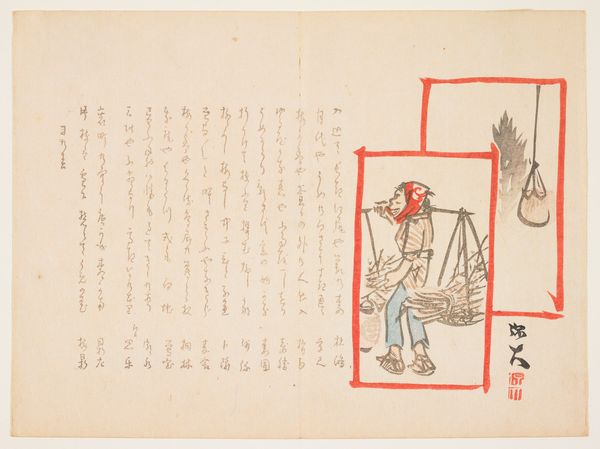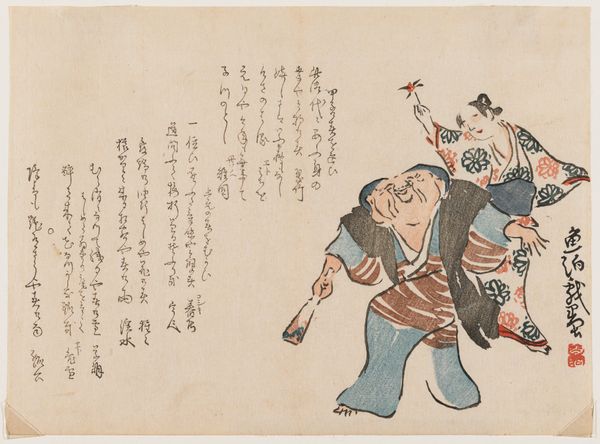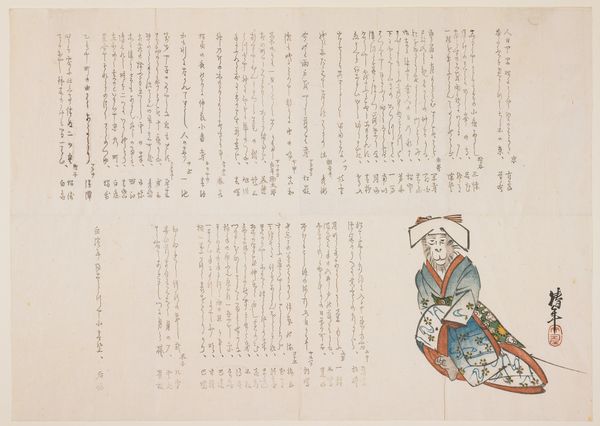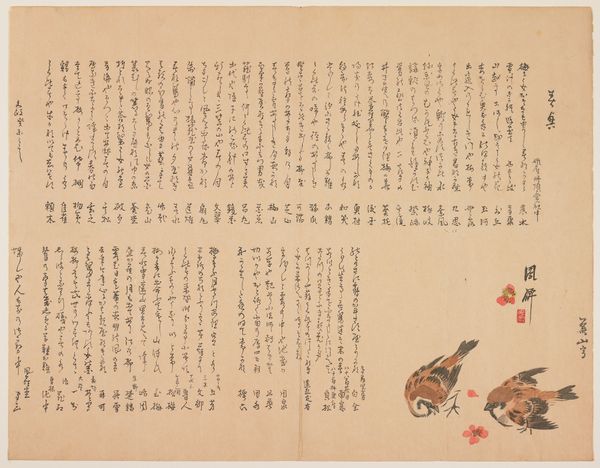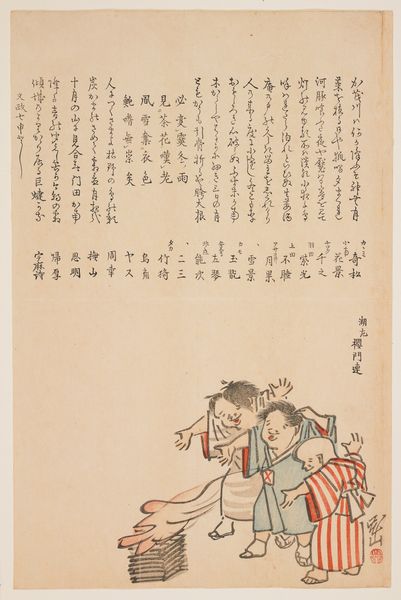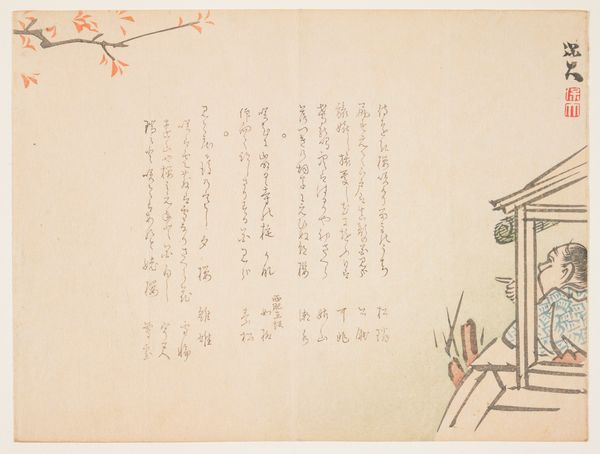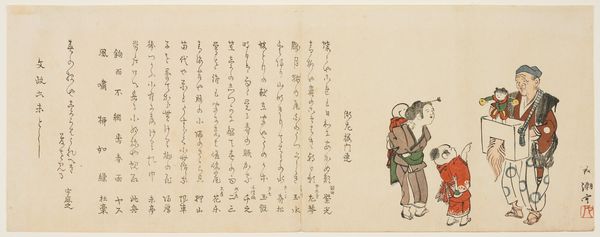
drawing, print, ink, woodblock-print
#
drawing
# print
#
landscape
#
ukiyo-e
#
figuration
#
ink
#
woodblock-print
Dimensions: 7 1/4 x 9 13/16 in. (18.4 x 24.9 cm) (image, sheet)
Copyright: Public Domain
Satō Hōdai created this woodblock print of a farmer digging roots in Japan during the late Edo or early Meiji period. At this time Japan was undergoing rapid social and economic change, moving away from an isolated feudal society toward a more modern, industrialized nation. The image of the farmer in this print can be understood through the lens of this transformation. Note the farmer's hunched posture and simple clothing which contrast with the idealized images of progress and modernity that were gaining popularity. Hōdai emphasizes the reality of rural life, perhaps as a commentary on the social costs of modernization. The roots, which provide sustenance, symbolize the farmer's connection to the land and the traditional ways of life that were being threatened. To understand this work fully, it is essential to delve into the history of Japanese printmaking, consult social histories of the period, and examine the cultural shifts that influenced artists like Hōdai. In doing so, we can appreciate how art reflects and responds to its own time.
Comments
No comments
Be the first to comment and join the conversation on the ultimate creative platform.
